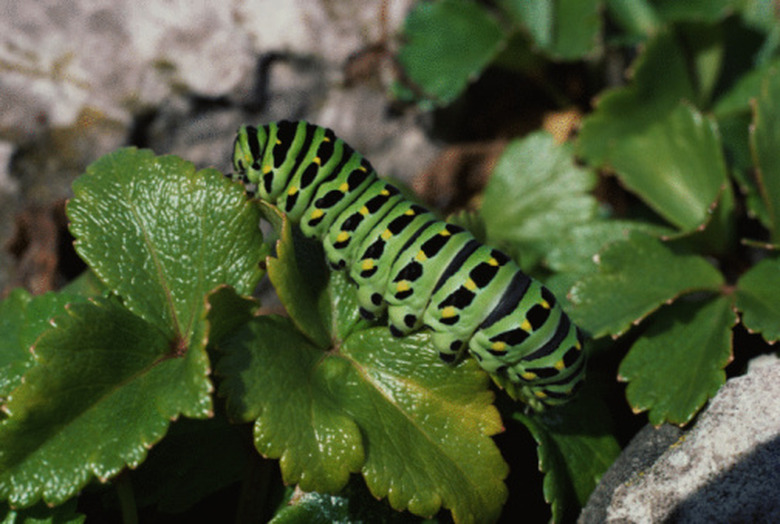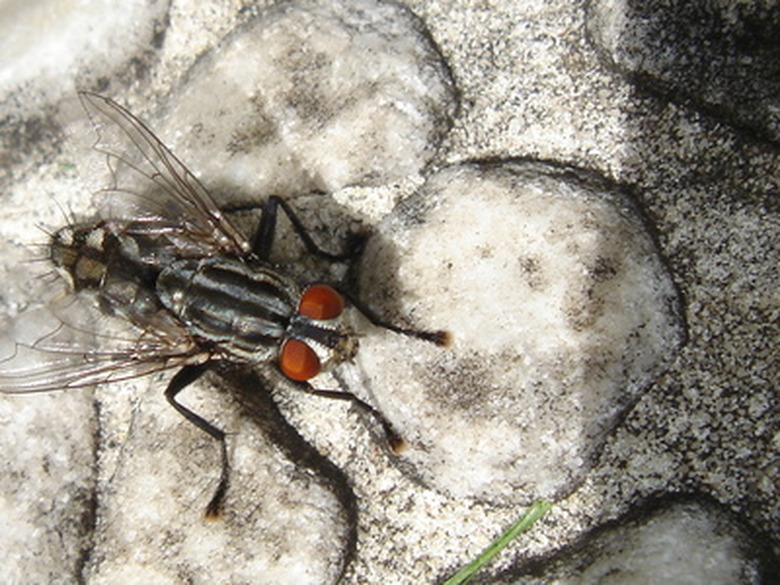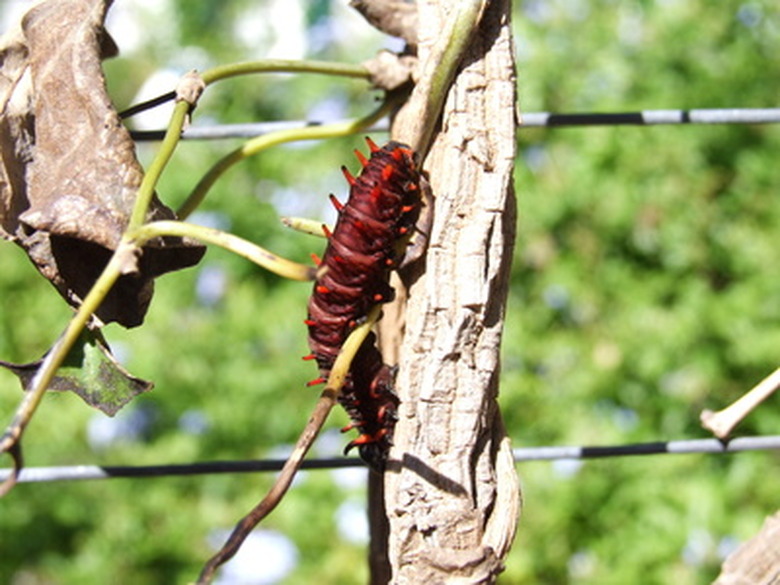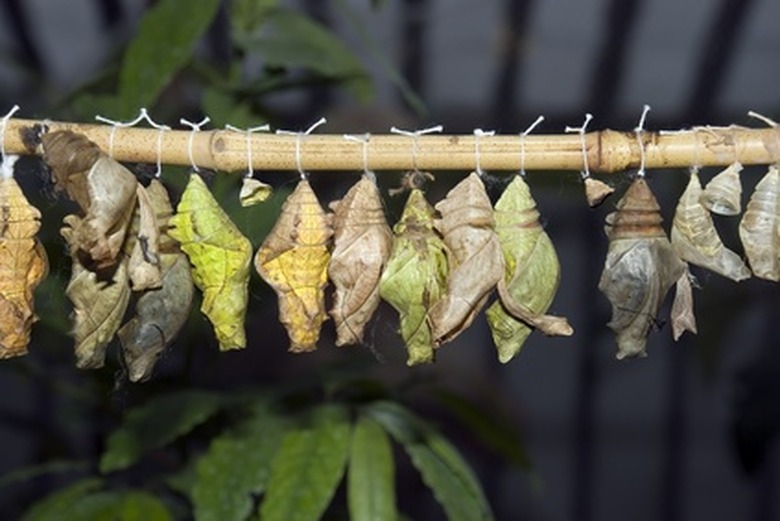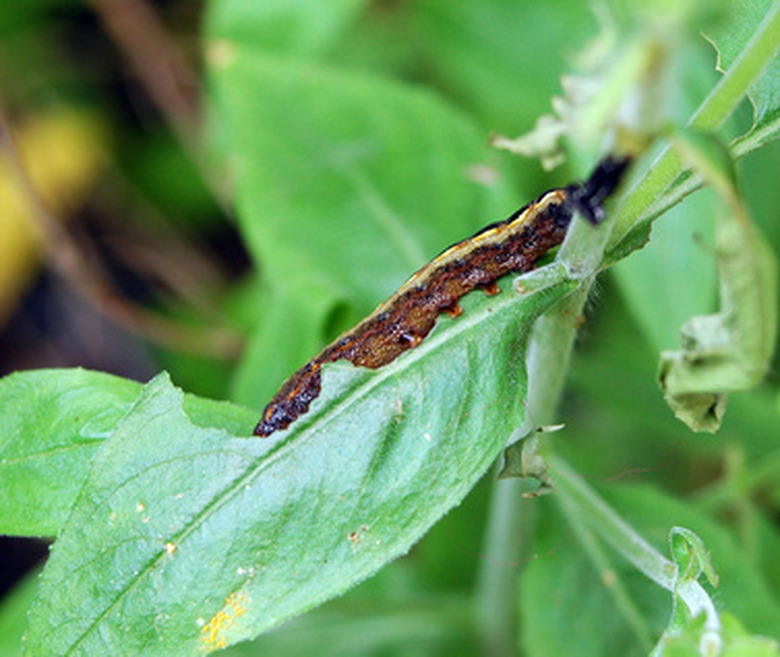Differences Between Maggots & Caterpillars
Maggots and caterpillars are both common denizens of the garden, but they are distinctly different in their appearance, feeding habits and eventual life-form. The maggot is the larval stage of flies, while the caterpillar is the larva of moths and butterflies. Both require control to keep your garden in top shape.
Feeding
Feeding
Flies lay eggs on dead or decaying matter. When the eggs hatch, maggots emerge. Maggots eat decaying organic matter and often form a mass of wiggling "worms." Butterflies and moths lay eggs on plant material. The egg hatch produces caterpillars, which consume plant material.
Appearance
Appearance
Maggots are short, typically less than 1/2 inch in length, contain hooked mouth parts on a tapered head and have a rounded or blunt hind end. A maggot is typically whitish tan with two kidney-shaped spiracles, or breathing holes, on its hind end. Maggots have no legs and move by worm-like contractions.
Caterpillars may be solid brown, black, green or yellow or bear a variety of striped or spotted patterns. They may reach lengths of 2 to 4 inches, depending on the species. Caterpillars have distinct eyes, body sections and two types of legs; they use one type to hold food and the other type for locomotion. Caterpillars have sensory hairs on their surface and may have spikes or fake eye spots to fool predators.
Life Cycle
Life Cycle
Flies lay eggs in decaying organic matter in warm weather. The eggs hatch within a few days and maggots emerge. Maggots devour the organic matter for 8 to 10 days, depending on the species and the temperature, and then move away from the decaying matter in order to pupate. The circular pupa is smaller than the maggot and represents the next stage of fly development.
Caterpillars consume plant material and grow rapidly. As they grow, they molt their skin several times to accommodate their larger size. Once a caterpillar reaches adult size in two weeks to a month, it spins a cocoon or chrysalis from silk glands near its mouth and pupates there while transforming into a moth or butterfly.
Control
Control
The most effective way to control maggots is to keep garden areas clean and free of decaying matter. Flies will bypass areas devoid of decaying organic matter and seek another location to lay their eggs. If you discover maggots in your garden, use a shovel to remove the dead material containing the maggots and dispose of it away from your home and garden.
You can control caterpillars a number of ways: by manually removing clumps of eggs, cocoons or caterpillars and disposing of them in a soap and water solution; allowing natural predators such as wasps to do the deed; by using a biological control such as Bacillus thuringiensis, or BT; or by applying a chemical pesticide to infected plants only. Use pesticides judiciously and do not use them at all on butterfly gardens to avoid killing beneficial insects, such as ladybugs, or endangered butterflies.
Cite This Article
MLA
Richford, Nannette. "Differences Between Maggots & Caterpillars" sciencing.com, https://www.sciencing.com/differences-between-maggots-caterpillars-13406421/. 21 July 2017.
APA
Richford, Nannette. (2017, July 21). Differences Between Maggots & Caterpillars. sciencing.com. Retrieved from https://www.sciencing.com/differences-between-maggots-caterpillars-13406421/
Chicago
Richford, Nannette. Differences Between Maggots & Caterpillars last modified March 24, 2022. https://www.sciencing.com/differences-between-maggots-caterpillars-13406421/
